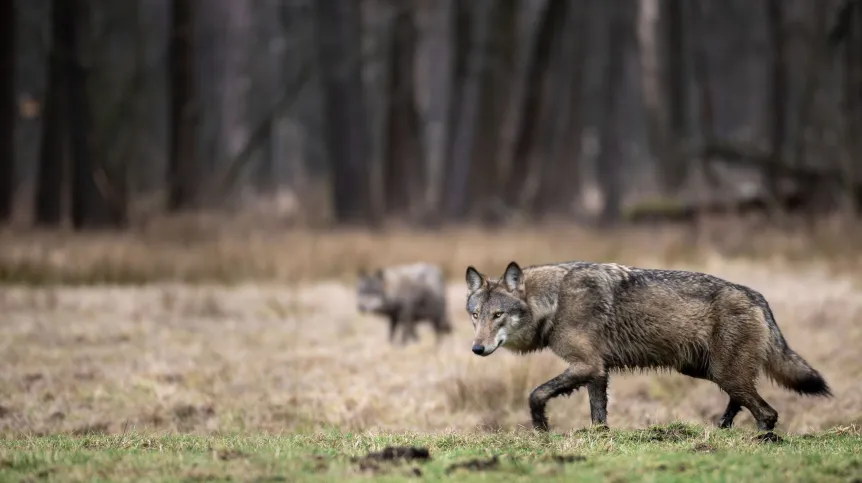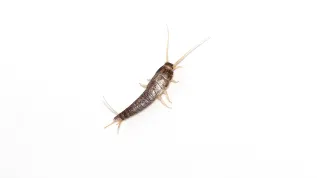
Despite the presence of several thousand free-grazing cows and several hundred horses in the Warta River Mouth area, wolves prey there primarily on wild mammal species, scientists from the Faculty of Biology of the University of Warsaw have shown. According to the researchers, this due to the way the livestock is grazed and the fact that cows are not dehorned.
The most frequently highlighted problem of the coexistence of large predatory mammals and humans is the damage predators cause to farm animals. This mainly concerns wolves, whose populations are rebuilding in Europe thanks to protective measures introduced at the end of the 20th century. The level of damage to livestock may be influenced, among other things, by the way of grazing.
Scientists from the Faculty of Biology of the University of Warsaw wanted to check the composition of the food of wolves in a place with numerous herds of free-grazing and unguarded farm animals. As the research site, they chose a part of western Poland covering half a thousand square kilometres, including the Warta River Mouth National Park and its vicinity, where approximately four thousand free-range cows and several hundred free-range horses are kept every year.
Using molecular methods based on the identification of individuals using a set of microsatellite sequences of nuclear DNA, as well as tracking and recording with camera traps, the researchers determined that fragments of the territories of two family groups of wolves overlapped in the research area. They analysed the content of 109 wolf faeces to determine the composition of their food. It turned out that in the Warta River Mouth area, wolves fed primarily on wild ungulates, which constituted as much as 81.9 percent of the biomass of food they consumed. They supplemented their diet with beavers and hares, the total share of which reached 14.5 percent. Contrary to expectations, domestic animals were rarely eaten, and cattle constituted only 3 percent of the food.
The results of the study were published in the "European Journal of Wildlife Research".
The low level of wolf predation on cattle and the lack of predation on horses in the Warta River Mouth may be due to grazing methods. Living in near-natural conditions allows both species of domestic animals to exhibit behaviours typical of large free-living herbivores, such as gathering in large herds and self-defence. Another factor may be that mainly beef cattle and cold-blooded horses are grazed in the area. Such breeds are much heavier and more muscular, making them more difficult to prey on. Another reason may be the fact that most cows in the Warta River Mouth area are not hornless. Removing horns from cattle may reduce their ability to defend themselves against predators, and this practice is particularly intensive in Northern and Central Europe, where the wolf population is developing, the authors of the study comment in a press release sent to PAP.
'Our research has confirmed that wolf predation on livestock is context dependent. In the case of free grazing of large livestock, such as beef cattle and cold-blooded horses, the impact of wolves may be smaller than expected', says the project co-author, Robert Mysłajek, PhD, a professor at the Faculty of Biology of the University of Warsaw.
'Previous studies have shown that interactions between wolves and livestock depend to a large extent on the environment, grazing methods, farmers' knowledge on damage prevention methods, availability of wild prey species and the stability of wolf family groups', emphasises the paper co-author Sabina Nowak, PhD, a professor at the University of Warsaw. 'For these reasons, when counteracting potential conflict situations, all these aspects should be taken into account before resorting to solutions that include lethal methods', she adds.
The research was co-financed by a grant awarded be the Polish National Science Centre ('From forest dweller to suburb tenant - wolf adaptations to human-dominated landscapes').
According to data published in March this year (in PLOS Sustainability and Transformation, co-authored by Nowak and Mysłajek), by 2022 there were at least 21.5 thousand wolves living in Europe, 19 thousand of them in the EU countries. This is a huge increase; studies published in 2015 mentioned of 12 thousand wolves.
According to the authors of that study, wild animals in Europe share space with a large human population and live in a heavily transformed landscape, where crops are grown, animals are bred, hunted, villages and cities and infrastructure are developed. Scientists remind that the presence of wolves often means conflicts between the behaviours and needs of this species and the concerns and needs of humans. In Europe, these conflicts mainly concern the protection of farm animals, competition with hunters for game, as well as concerns about human encounters with wolves.
The researchers remind in PLOS that around 19,000 wolves in the EU kill around 56,000 farm animals every year, out of a total population of 279 million. This means that an average wolf in the EU kills three farm animals every year. The risk varies depending on the region. Sheep and goats are most often killed in an encounter with a wolf (two-thirds of losses), although preying on cattle, horses, reindeer and dogs also happens. The highest losses are recorded in Croatia, France, Greece, Italy, Norway and Spain, which may be due to the grazing model and a different loss compensation system in these countries. (PAP)
PAP - Science in Poland
zan/ bar/













